As decades-old debates about the costs and benefits of America’s massive dams drag on, river advocates are quietly clearing smaller clogs—and the combined impact of removing little dams is making a big difference.
How to Set a River Free
To river lovers, Glen Canyon Dam is the Death Star and Voldemort combined. Blocking the Colorado River in Northern Arizona, it stands 750 feet tall and a third of a mile wide, and drowned 186 miles of Glen Canyon, along with 96 side canyons. When the dam was completed in 1966, it transformed the Colorado through the Grand Canyon from a wild flood-prone, sediment laden desert river into a clear, cold, engineered flow, changing beaches, river running and river ecology.
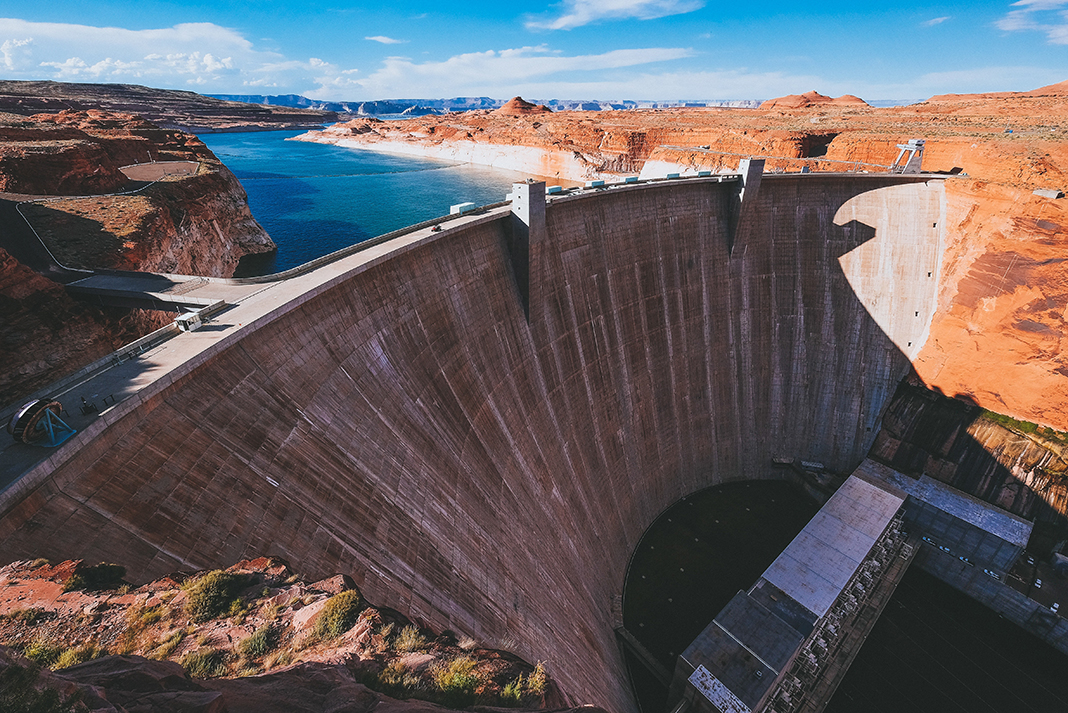
Glen Canyon Dam has been in the crosshairs of river lovers for 50 years, inspiring periodic dreams of removal and the occasional short-lived public debate when parts of Glen Canyon emerge from Lake Powell during droughts.
It’s not the only hydroelectric establishment to fall under scrutiny. Four dams on southeastern Washington’s lower Snake River: Little Goose, Lower Monumental, Lower Granite and Ice Harbor, have also been a target of river advocates since Snake River salmon were listed under the Endangered Species Act in the 1990s.
Massive dam projects like these make headlines, but they also obscure key facts about rivers and dams. For every large federal dam like Glen Canyon or Lower Granite, there are thousands of minor ones: nearly 80,000 small dams restrict the rivers of the U.S. and while lawsuits about the Snake River dams drag into their third decade, river lovers have been quietly clearing smaller clogs.
Reframing the dam debate
The Elwha and Glines Canyon dams in Olympic National Park were removed between 2011 and 2014, freeing one of the Northwest’s best salmon rivers. The Condit Dam on the White Salmon River in Washington was breached in 2011 and at 125 feet tall and 470 feet wide, it is the largest dam ever removed. Compared to its larger Glen Canyon-style cousins, however, it is still considered a small dam on a tiny tributary.
Removing modest dams like Condit, Elwha and Glines Canyon has reframed the dam removal debate from large federal dams to smaller river obstacles.
“It’s easy to focus on the big dams, but the combined impact of many small dams can be much larger,” says Brian Graber, director of river restoration at American Rivers. “They block fish passage. They create shallow impoundments that warm up and reduce oxygen more than a big reservoir.” Small dams can also divert most of a river out from its bed, leading to severely dewatered stretches. “The large dams become the story, but few people realize that 72 dams were removed last year alone,” Graber says.
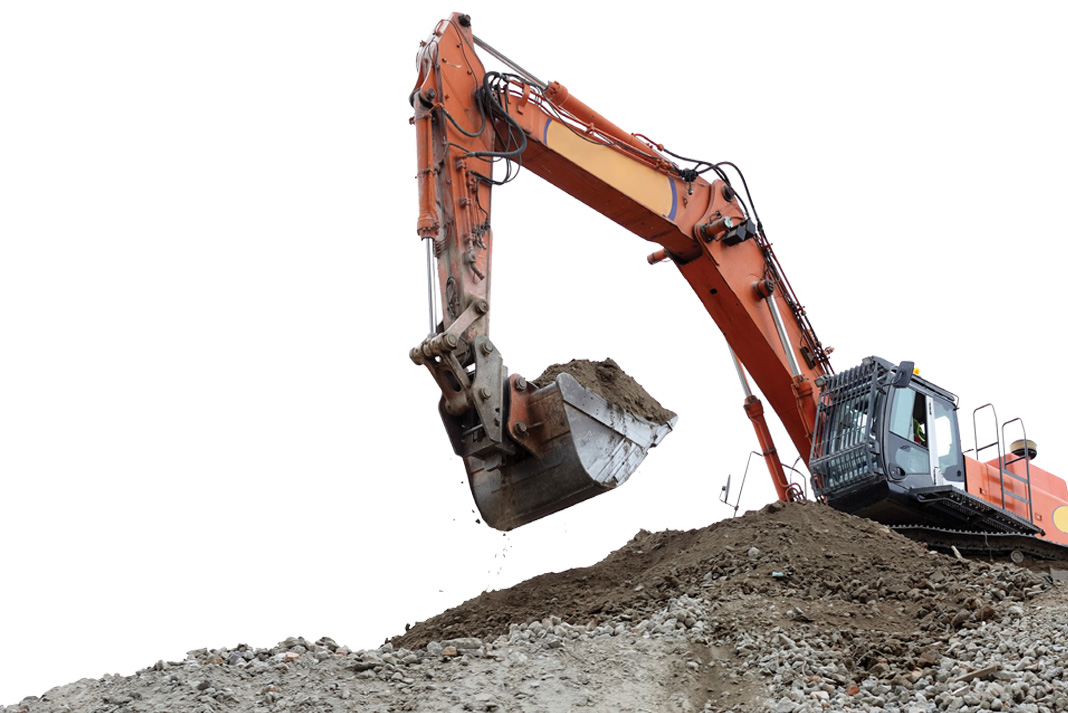
Most small dams were built between the 1800s and the 1960s, and they’re showing their age. Some are unsafe, and owners are finding the cost of repairs and upgrades exceeds the small amount of power they generate. In many cases, they generate none at all. Faced with these economics, removing old dams can be smart for the bottom line of the power companies, irrigators and government agencies that own most of the nation’s small dams—and smart for the river.
Dam building followed settlement, meaning dams in eastern North America are typically older than those in the West, and safety problems are more severe. In 2005, the town of Taunton, Massachusetts, was evacuated after the wooden Whittenton Pond Dam, built in 1832, buckled and nearly failed.
“A lot of funding comes from fisheries, but a lot of the impetus for removing small dams comes from public safety,” says Graber.
According to Graber, most dam safety offices around the country are badly understaffed, and they can’t keep up with the inspections of hundreds or thousands of aging dams. This creates an incentive to remove small dams rather than have them decay and risk collapse.
Dam removal remains complicated and contested
While small dam removal projects don’t take the time and money of larger-scale projects, they can still be rife with opposition and obstacles that river advocates must work hard to overcome.
When a dam dates back to the early 20th century, there’s no public memory of a free-flowing river. “People will associate a place with a pond or lake, and change itself is always difficult,” says Kevin Colburn of American Whitewater.
“You’ll have people who like fishing for pond fish rather than river fish,” Graber adds. “I can’t say that what I like is better than what you like, but removing these dams is better for the river and public safety.” Listening to those concerns can help mend fences between people who might see themselves on opposite sides of the issue, such as longtime residents, landowners and out-of-town kayakers.
When you dam a river, along with stopping the natural flow of the water, you stop the natural flow of sediment. When sediment has accumulated behind a dam for decades, there’s the question of what will happen when the river is set free. Dam removals on the Sandy, White Salmon and Elwha rivers indicate that the sediment flushes downstream quickly. When the 45-foot Marmot Dam was removed from Oregon’s Sandy River in 2007, nearly a million cubic yards of sediment that had been accumulating for 90 years cleared itself in less than two years.
Although most rivers return to health rapidly of their own accord, public perception is still a challenge. “People will always have a fear that without the impoundment, there’s going to be a stinking mudflat for eternity,” says Graber. “We draw on other projects for examples of how the rivers restore themselves.”
On Washington’s Sullivan Creek, American Whitewater commissioned a landscape architect to create images of what the river might look like immediately after dam removal, five years and 10 years afterwards to help convince locals it wouldn’t be a mud pit.
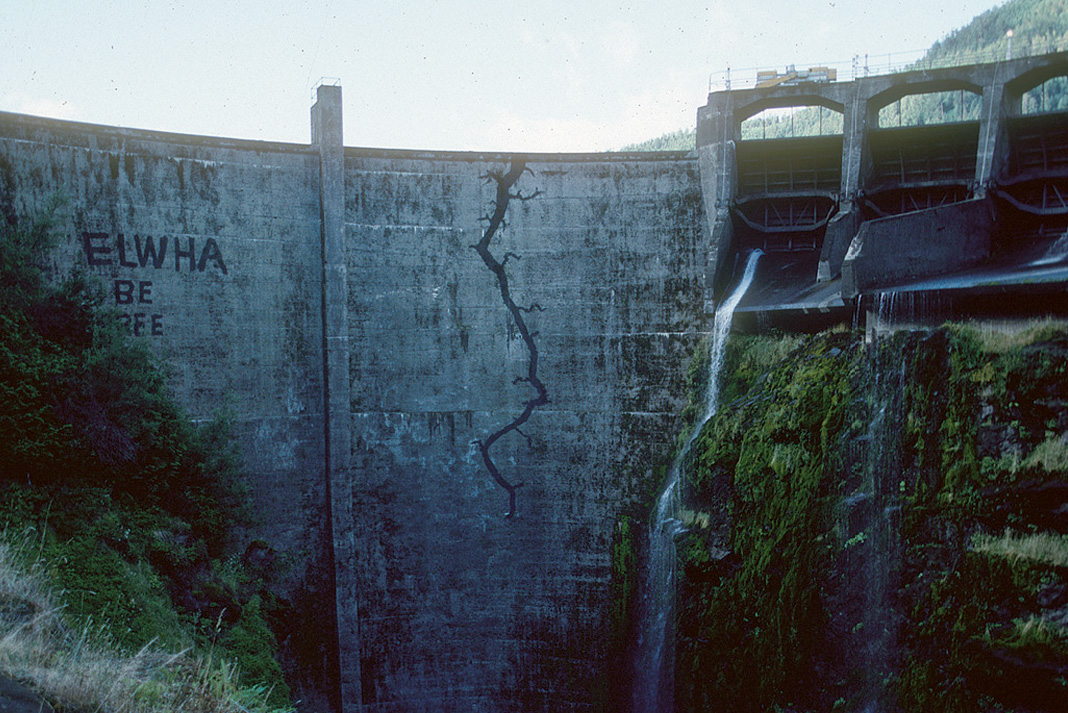
Even when the process of agreeing to remove a dam is quick, the act of freeing the river often takes much longer. “We tell people to expect a three-year process for a typical small dam,” says Graber, who trains people to negotiate agreements, make removal and river restoration plans, raise money and manage dam removal projects. “The first year is for initial reconnaissance and fundraising. Year two is design, getting permits and more fundraising. Year three is actual removal.”
A three-year project involving permits, engineering, complex negotiations and raising seven- or eight-figure sums may seem beyond the staying power of even the most committed river paddlers. Understanding the many eddies and boils of dam removal, such as hydropower economics, dam relicensing and river ecology, can boggle the mind. That’s where more formal river organizations come in. Local river advocates often turn to established organizations, such as watershed councils and national groups like American Whitewater and American Rivers, for help. They have staff that know the warp and weft of dam removal and fundraising, are in it for the long haul, and can draw on experience from other successful removals across the country. Once federal agencies, pubic safety and dam owners are all on the same side, the question often becomes about how, not if, which removes the acrimony that often swirls around river issues.
Setting priorities for setting rivers free
With 80,000 small private dams dotting the country’s rivers, one of the hardest decisions is which dams to remove first. “There are two ways American Rivers tends to prioritize,” says Graber. One is to look at all the dams in a watershed, do a prioritization exercise with GIS, fish runs, habitat and recreational areas, and assess how many river miles each dam would open up if removed. “But that usually points to larger dams, which are generally still used for hydropower and will be more difficult to remove.”
“The question becomes about how, not if, which removes the acrimony that swirls around river issues.”
More often, Graber works with dam safety officers and fish biologists to identify smaller dams where owners are interested in removal. He tries to remove multiple dams on the same river whenever possible.
As paddlers, deciding which dams to target is often a much easier process—the ones in our watershed, the rivers we care about the most, and the ones that will have the most benefit for our local region.
Recovery proceeds quickly when dams are breached. Insects and fish usually return in months or a few years, and vegetation flourishes in the first growing season. Salmon touched the upper reaches of the Elwha mere months after the removal of Glines Canyon Dam. Herring returned to the Taunton River in Massachusetts the year after the dam was removed, migrating upriver for the first time since the War of 1812. On Oregon’s Sandy River, the run from Marmot Bridge to the old Marmot Dam site is now a continuous class III run with a class IV drop. Paddlers can routinely run the “Lower Lower White Salmon” from the former Northwestern Lake to the Columbia River, including a newly rediscovered gorge.
Like a river carving a canyon, removing a dam is about becoming a patient, steady, irresistible force. As Graber puts it, “The most important thing is not having skills in engineering or fisheries biology. It’s having persistence.”
5 success stories of small dam removals
1 Big Hungry Creek
North Carolina
“I got calls from boaters paddling the famous Green River Narrows, saying ‘the water in the Narrows is very muddy, what’s going on?’” says Kevin Colburn, Asheville resident and stewardship director for American Whitewater.
Colburn knew the sediment was from a bulldozer removing one of two dams on Big Hungry Creek, a tributary of the Green. Plans for removing a second are underway. “Big Hungry Creek is a warm-up for the Narrows. When you put in for the Narrows now, you put in at the Confluence of Big Hungry and the Green,” Colburn says. “Soon you’ll be able to put in on Big Hungry and float all the way to the Narrows instead of having to portage over an old dam.”
The dams hadn’t generated a single kilowatt of hydropower for nearly half a century. “The state asked, ‘Do these dams serve a purpose? Do they pose a risk?’” says Colburn. “When the answers were ‘no and yes,’ the state decided to remove them. American Whitewater didn’t suggest it—we wrote letters of support, and paddlers had been beating the drum.”
While bulldozers dismantle the lower dam, sediment moves downstream. “It’s a very high gradient system and the river will cut through the sediment like a hot knife through butter,” says Colburn. “It may change the rapids in the Narrows for a little while, making it more dynamic, a little more natural.”
2 Pine Meadow Ranch Dam
Whychus Creek, Oregon
Whychus Creek, near the town of Sisters, flows into the Deschutes River. The Upper Deschutes Watershed Council has been working for years to restore some of Central Oregon’s best fish habitat. Salmon and steelhead were reintroduced in 2007—the first salmon in the river in 50 years. One of the obstacles was at Pine Meadow Ranch, a 200-acre farm that had been in the Sokol family for generations. The ranch had a six-foot-high concrete dam that blocked 13 miles of spawning habitat.
The dam was removed last fall.
“It literally took five years of kitchen table conversations with the family,” says Ryan Houston, the council’s executive director. “We talked about a range of ideas, and what worked was to remove the dam, relocate their diversion to another part of the creek where it wouldn’t require a dam, and to get fast-track approval from regulators to move the ranch’s irrigation water right.”
The dam removal also allowed the ranch to upgrade its irrigation system. “If they save 30 percent of their water, they can sell the remaining water right back to the creek and still irrigate the same amount of land,” says Houston. “It’s a clever way of being forward-thinking.”
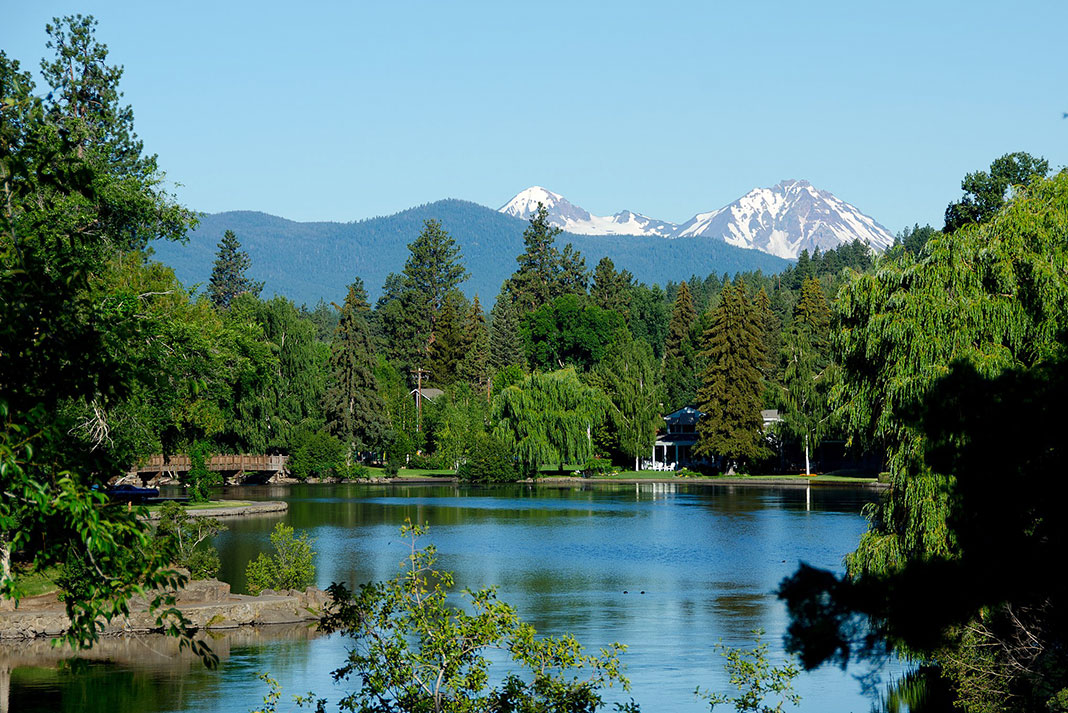
3 Newport Avenue Dam
Deschutes River, Oregon
Mirror Pond in downtown Bend, Oregon, is as iconic a feature as a town can have. Surrounded by parks, it reflects the 10,300-foot South Sister volcano and is on the label of Deschutes Brewery’s Mirror Pond Pale Ale, the best-selling beer for one of Oregon’s first microbreweries. It’s doubtful anyone alive today has seen the Deschutes River flow freely through downtown Bend.
The 12-foot Newport Avenue dam is leaking. Built in 1910, it no longer generates enough power to make it worth repairing, and Mirror Pond is slowly but surely filling with sediment. At first, two options threatened to divide the community: repair the dam and dredge the sediment, or restore a free-flowing river to downtown Bend. Many longtime residents were attached to Bend’s iconic viewshed and fought hard to keep the pond. Die-hard fishermen, environmentalists and those newer to town gravitated toward a free-flowing river.
In 2014, the volunteer-driven Bend Paddle Trail Alliance offered a third option. They proposed replacing the dam with inflatable bladders, like those installed in a whitewater park under construction, just upstream at the Old Mill. The plan would remove the dam, allowing trout to migrate, and maintain the visual landscape of the pond. It would also improve use for paddlers, put a trail next to the river and redevelop part of downtown Bend.
“It’s a compromise,” says Justin Rae, a board member of the Alliance. “It keeps the iconic view, allows fish passage and recreational use, and removes an industrial eyesore, but it does shrink the pond by about a quarter.”
While the hybrid option has gathered a lot of support, many questions still remain. Who will pay the bill? Will the design flush enough sediment?
“It’s a great vision. Cost, financing, schedules and design are critical details that will need vetting, and that will take time and work. We’re keeping the conversation at a high level right now, gathering community support and trying not to get into the weeds,” says Michael McLandress of the local chapter of Trout Unlimited and former Mirror Pond project manager. “Really great ideas need time to percolate before you dive into the details.”
4 Connecticut River
New Hampshire, Vermont & Massachusetts
The Connecticut River is heavily managed, with no less than five dam relicensings underway in the past year. “The dams on the Connecticut have substantially impaired whitewater paddling,” says Bob Nasdor of American Whitewater. “There could be miles-long runs, if not for the dams.” Some park ‘n’ play features still exist, but the whitewater features are dewatered by First Light and TransCanada hydropower operations.
According to Nasdor, this project is not about dam removal: it’s about securing flow releases for whitewater boating in key stretches like a 2.7-mile section at Turners Falls and a perfect skill development area at Bellows Falls.
American Whitewater has also proposed a whitewater park in the bypass reach below Bellows Falls dam. “It would be nice to talk about removing them,” says Nasdor. “But the goal now is to get enough flows for boating in the dewatered sections, and get rid of one obsolete low-head dam that limits recreation and damages habitat.”
American Whitewater, the Appalachian Mountain Club and New England FLOW have pushed for studies to determine release levels for whitewater boating from Wilder Dam, Bellows Falls and Turners Falls.
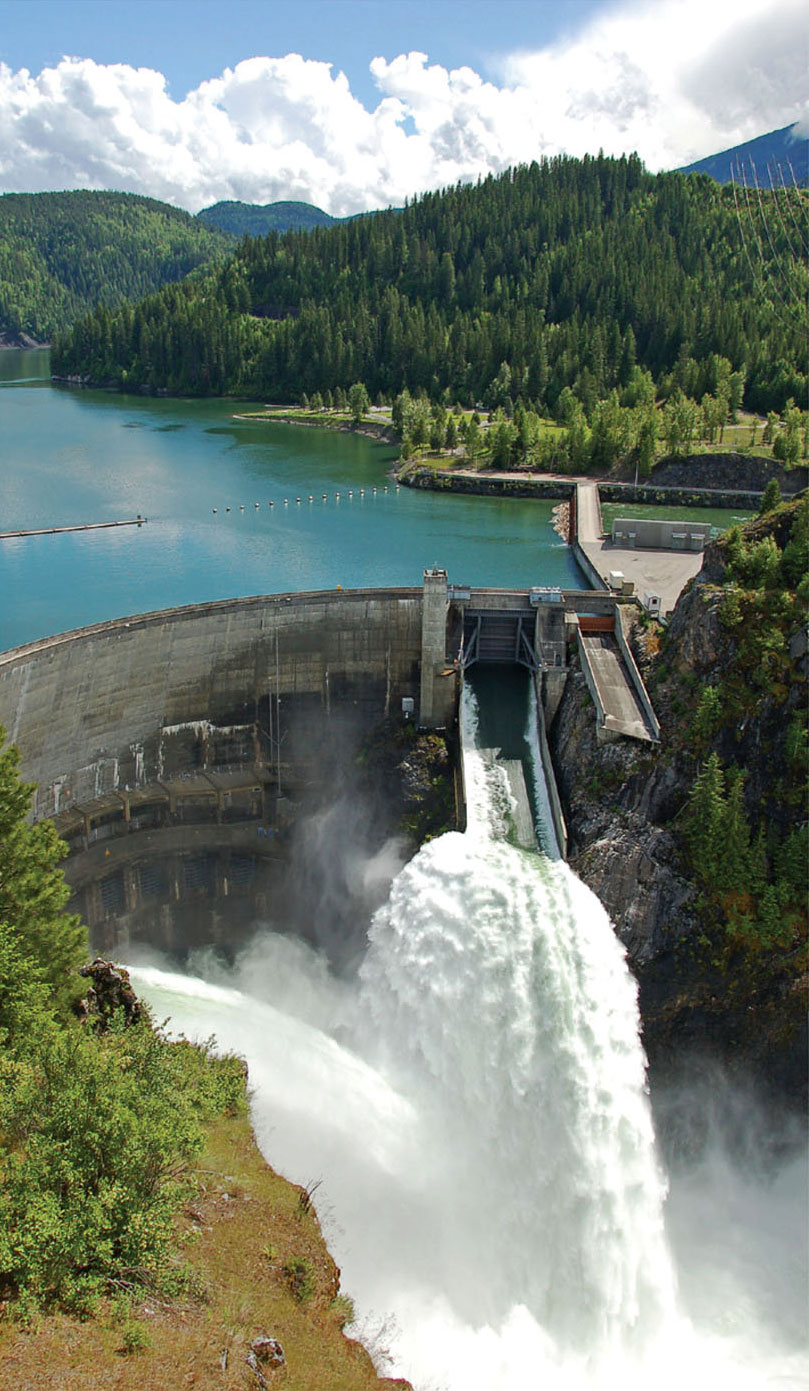
5 Mill Pond Dam
Sullivan Creek, Washington
The Mill Pond Dam in northeastern Washington’s Purcell Mountains hasn’t generated power since the ‘50s. Landslides repeatedly damaged the wooden diversion flume that brought water to the turbines. The potential for paddlers was enormous: an old powerhouse overlooks the last class IV rapid. “Someday it could make the ultimate riverside brew pub,” says Colburn.
What seemed like a slam-dunk ran into problems. The dam owner was the Pend-Oreille Public Utility Commission, a small utility with 8,500 rural ratepayers. Nobody wanted to saddle a tiny group of ratepayers in a town with a struggling economy with removal costs into the millions. And many local residents still wanted to save the pond, seeing the project as benefiting out-of-town kayakers.
The game changed when the river found a surprising partner: a dam owner that wanted to keep its dam operating. Seattle City Light was trying to relicense their Boundary Dam downstream, a 300-foot-tall major dam supplying over a third of Seattle’s electricity. Because of bull trout and cutthroat trout in the river system, Seattle City Light was required to do mitigation in the same river system and decided to help fund the removal of Mill Pond Dam. The project moved forward. “It isn’t like everyone is singing Kumbaya,” says Colburn. “Dam removals are about change, and it’s not without personal impacts.”
Removal is slated for 2018, and American Whitewater has pushed for local residents to be hired to do as much of the removal as possible.
Neil Schulman is a paddler, writer and longtime river advocate based in Portland, OR.
ELWHA BE FREE: Painted in 1987, the iconic crack on the Glines Canyon Dam was a cry to set the river free. The dam was demolished in 2014. | Feature photo: Mikal Jakubal



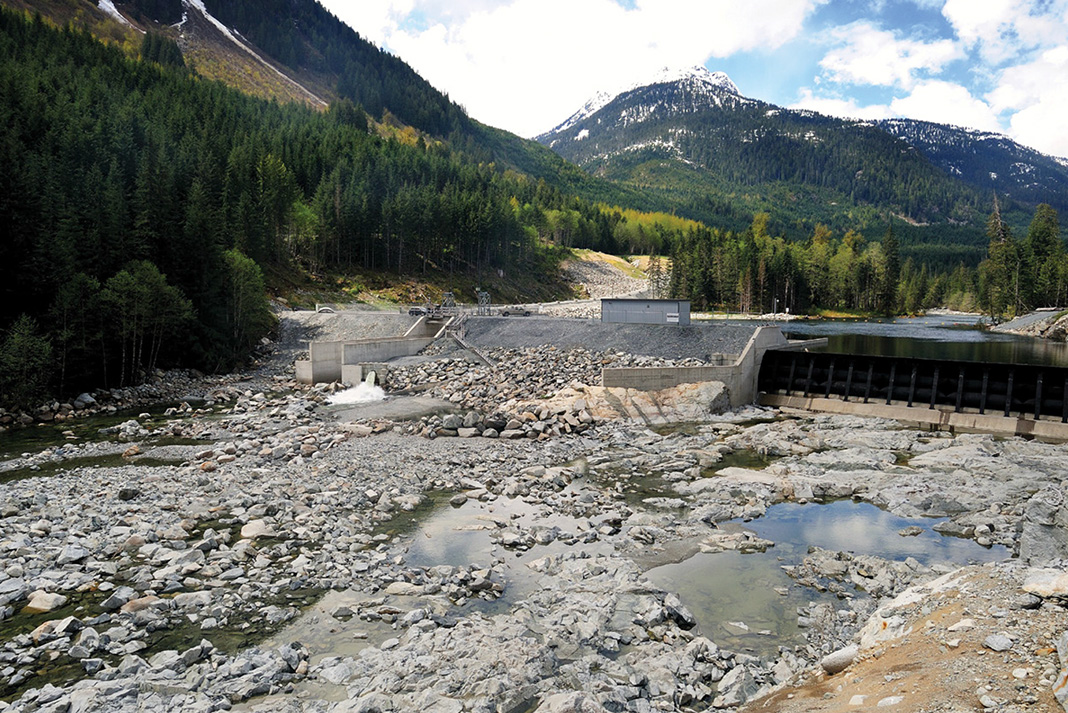
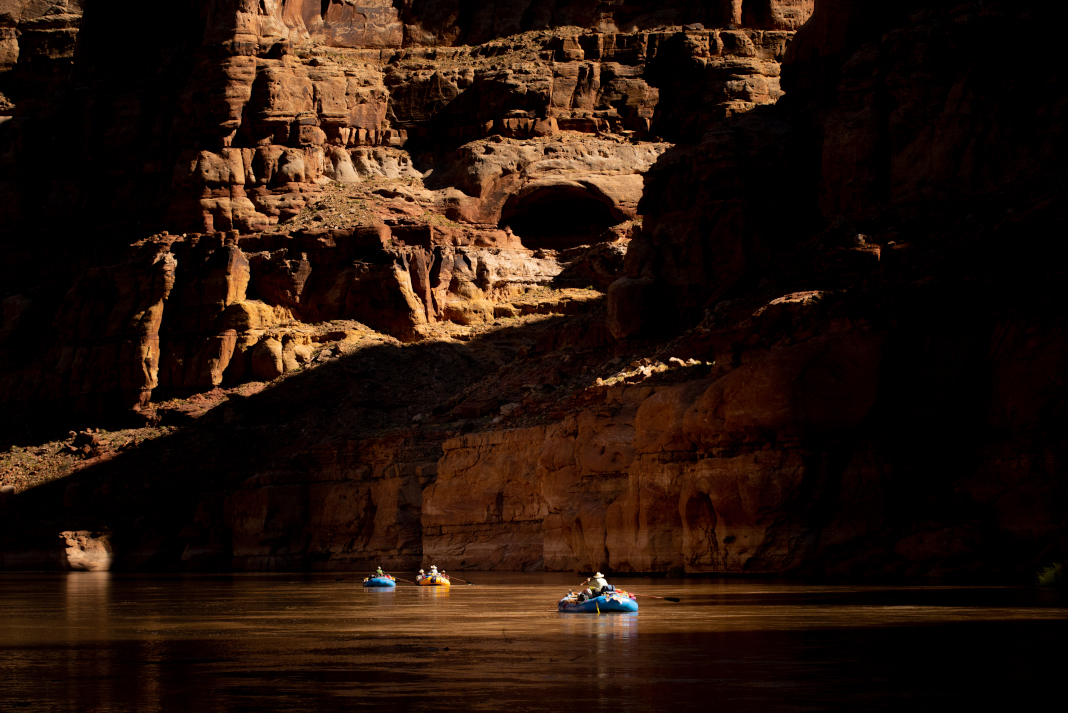
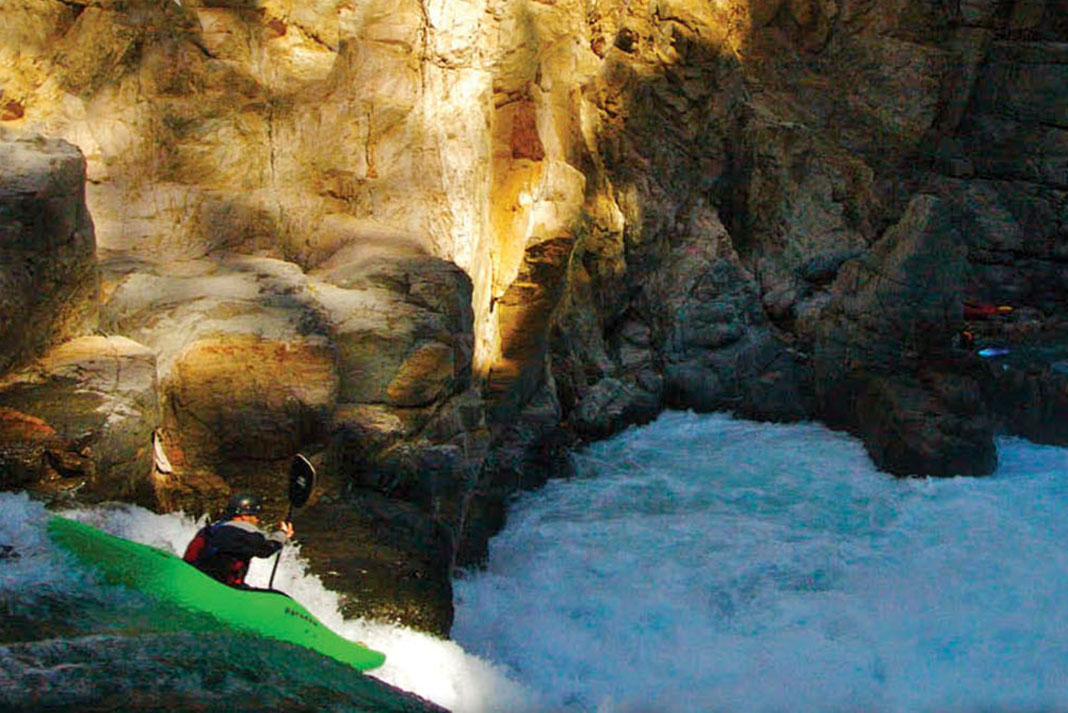
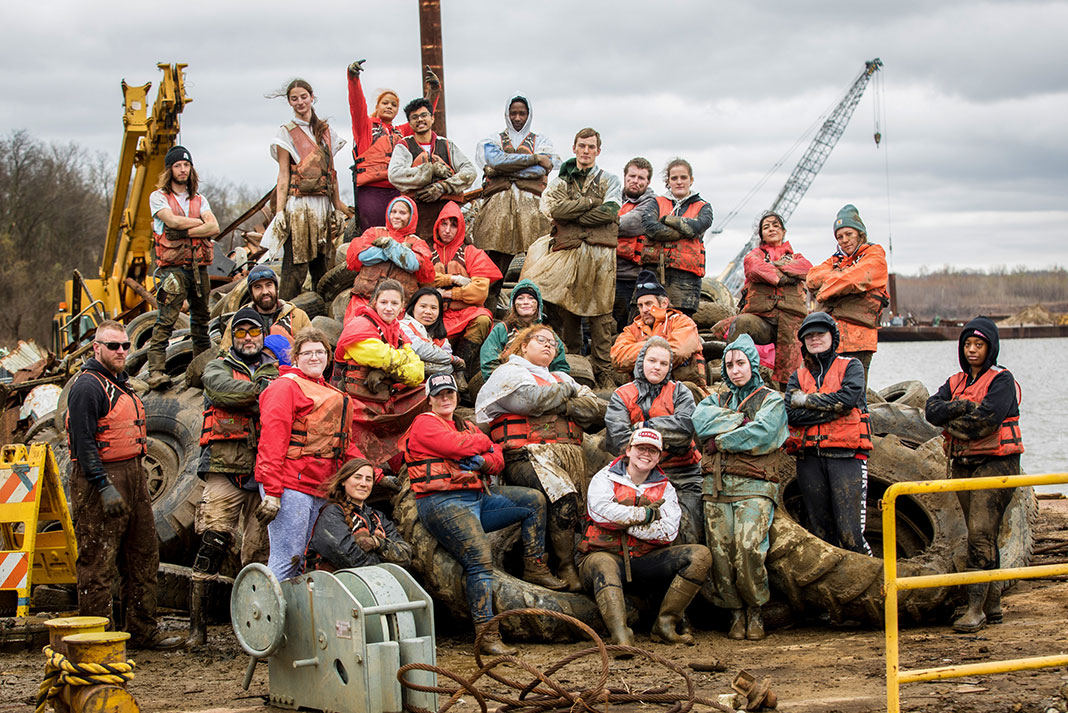
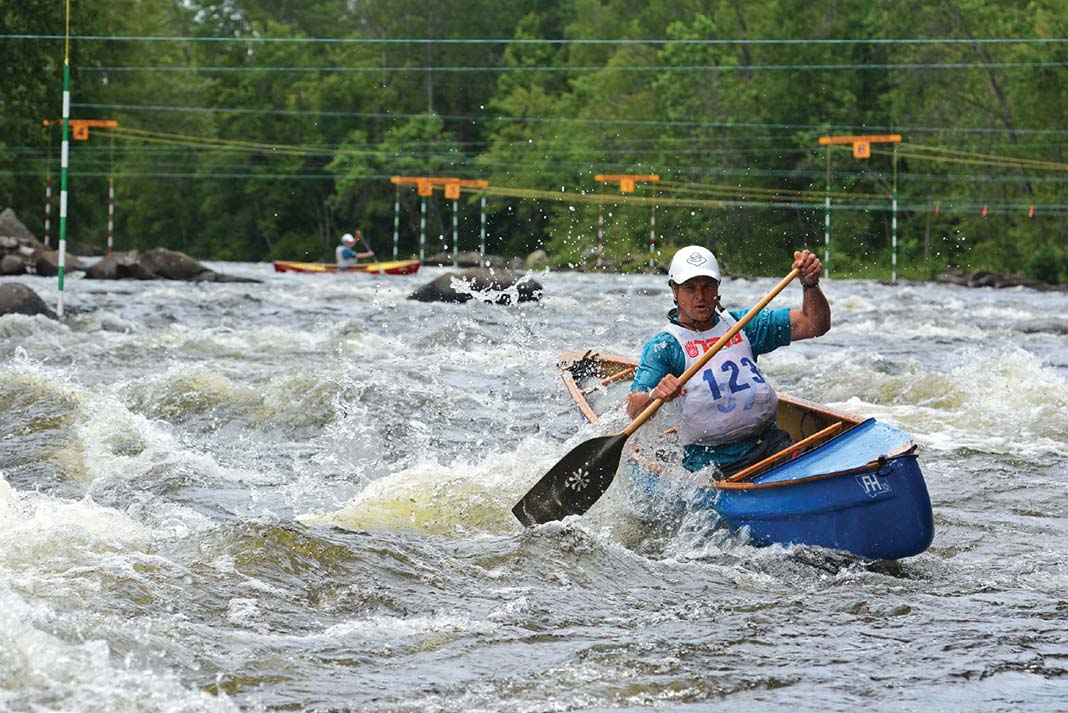
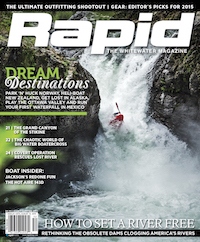 This article was first published in the Early Summer 2015 issue of Rapid Magazine.
This article was first published in the Early Summer 2015 issue of Rapid Magazine. 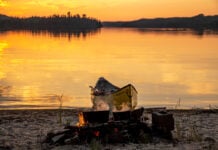





Very thoughtful and informative article on a very relevant topic. Thanks for reprinting it. Would like to see more river conservation pieces.